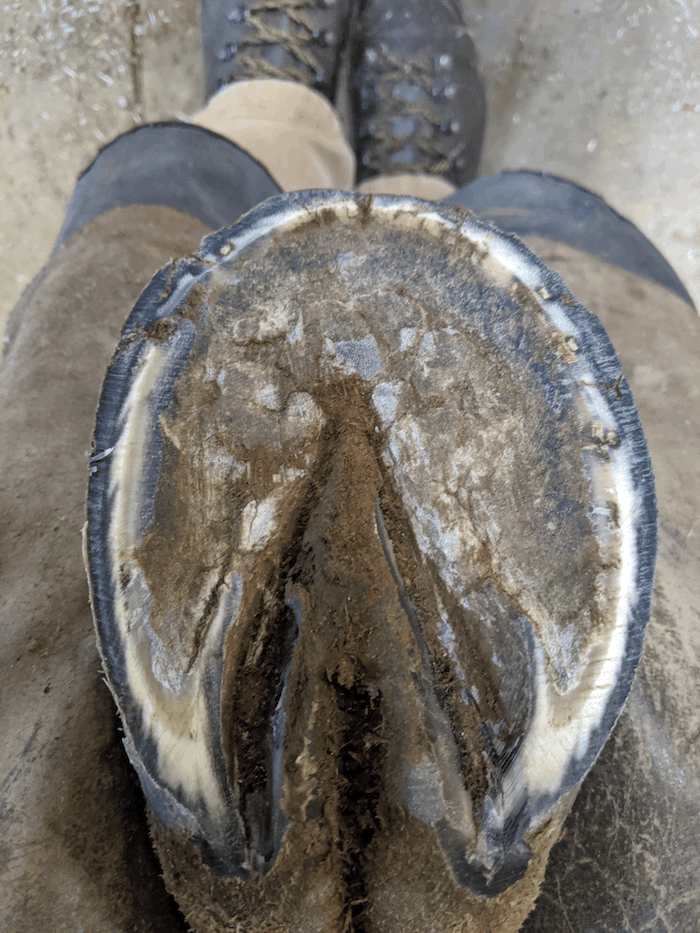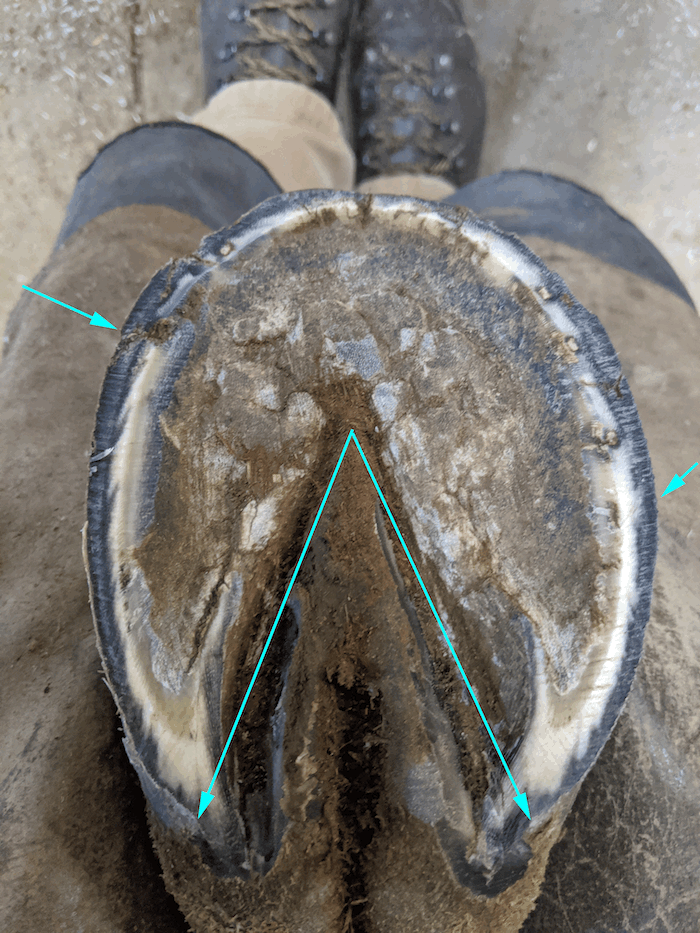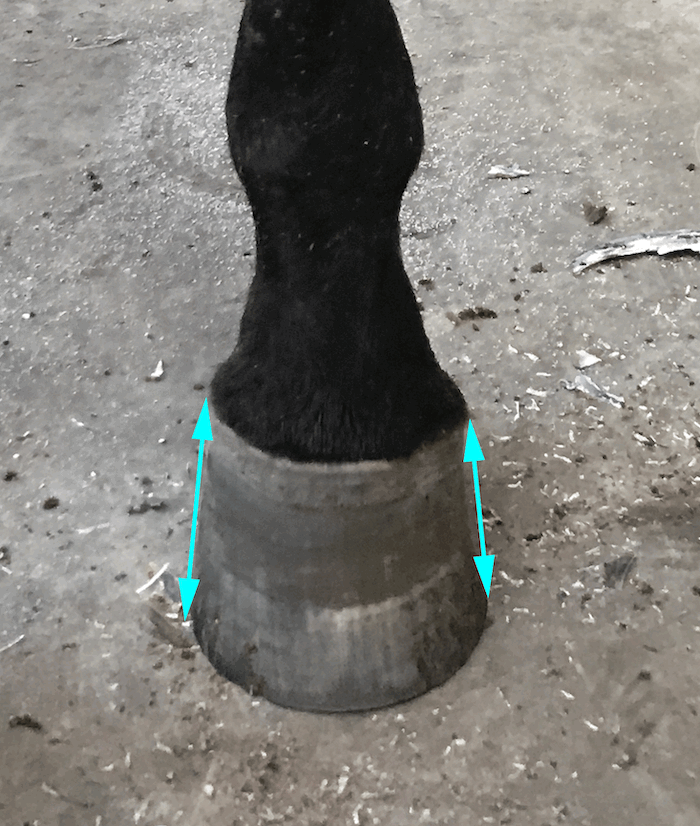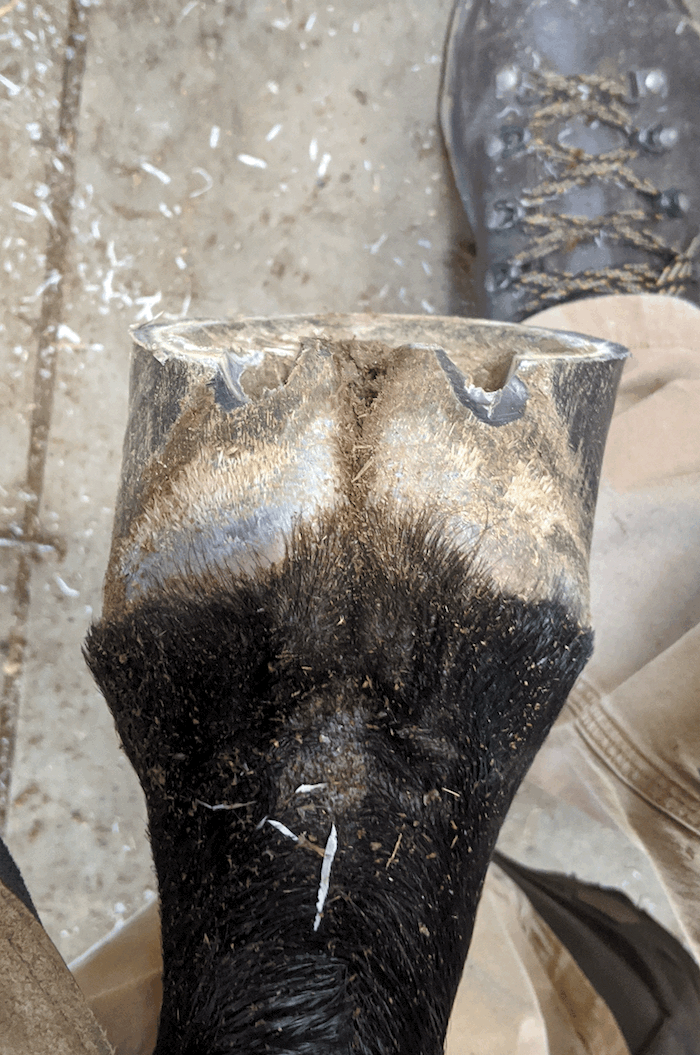The hoof of any equine athlete adapts to the forces upon it. We look at a single hoof from different views to assess it for level and sometimes gain opposing opinions from those views. Figure 1 is an example. This hoof is a left front. The medial hoof wall (left side in picture) is much straighter and tighter in the heel than the lateral side. Figure 2 is the same photo illustrating where the quarter bends are in each side of that hoof indicated by the arrows on each side. The nail hole at that spot was indicating some trauma probably due to higher stress in this area of hoof wall. This nail was not abscessed though and caused no lameness. Also, the fact that nails were driven in the toe area and away from that tight medial heel was probably a good idea.

FIGURE 1

FIGURE 2
When looking at Figure 2 notice that the arrows from the point of the frog to each heel are reasonably equal. This is one indicator (of several) to watch when trying to achieve a level hoof. Now consider the fact that the lateral side of the hoof is bigger and rounder than the medial side indicating an unlevel hoof and warrants further assessment.

FIGURE 3
When looking at Figure 3 we can see the coronary band is elevated on the medial side which also indicates an unlevel hoof. Notice how the medial hoof wall is longer than the lateral hoof wall.

FIGURE 4
This is a hoof that needs correction. Figure 4 shows one way to sight this hoof. The slight redness of the medial heel bulb in Figure 4 shows us more trauma on that side. Also, we can see a moderate amount of heel shear in this hoof by noticing the difference in length from the bottom of each side to the hairline. I have trimmed the heel of this medial side lower to help relieve the stress in this area. Since this horse wears a flip flop pad which has no metal in the heels, I can float that side as much as possible without worry to the heel fit of a full metal shoe. I use this practice very often when a horse can wear the flip flop pad. I think there is benefit in taking advantage of this shoeing application in such a way as to gain some relief for a hoof like this. Fitting the shoe wider than the hoof wall on the medial side of this hoof is beneficial. Such a shoe fit is a bit tricky, especially on the medial side, but achievable none the less.
A “level” hoof is subjective to the person looking at it, also to the horse itself. An ideal level hoof is one that touches the ground evenly on both sides during each foot fall, supports the cannon bone equally on each side, and has a coronary band that is horizontally co-planer to the ground. As we know a horse’s conformation is not always ideal and a level hoof is sometimes very difficult to achieve. This make the practice of “just shoe him/her level” not just a single application but a constant endeavor which can challenge even the best horsemen. It is endeavor though, that will help the horse, each horse individually, each hoof independent of the others. This effort requires constant reassessment, a level head, and level best effort, even during the times when our bubble is a little off center.








Post a comment
Report Abusive Comment